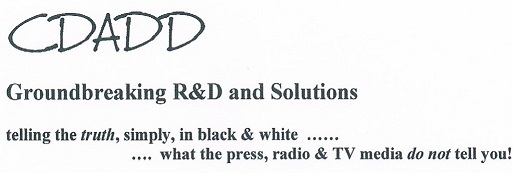Price Wars – maintaining the Dividing Line
Need to rethink – Price Protection to Shift the Dividing Line.
The responsibility for economic & social stability within an economy rests on all persons, from Government through to Private sector. With regard to developing of under-developed economies 1st World countries have a responsibility to assist in achieving stability within those poorer countries.
Free Market systems, as they have become developed over the centuries, have inherent problems that are destructive within 1st World but catastrophically destructive within 3rd World.
Competition within Free Markets allow for Price Wars between competing companies/entities. But any War, Hot or Cold, however short, produces no winners, only losers. Attempts to regulate unfair competition results in protracted litigation which in itself is a War with, invariably, the wealthier party “buying” a judgement outcome. Whilst such prolonged manipulations are more easily absorbed in 1st World countries, even though the losses are significant in even the smallest of litigation conflicts, 3rd World countries are unable to absorb these losses.
Attempts at Price Control have failed; as has been shown in the extreme case of Communism and in lesser extremes of Free Markets with Socialist elements. The destructive nature of Price Control can be seen from the issues of Interest Rates & Loans – an Interest Rate is simply a time price for money which is also used as economy control device. In other words, a government agency (Reserve Bank), sets the Price (Price Control) of money. The articles Interest Rates & Loans sets out the problem & solutions more fully.
But simply stated: the two extremes No Price Control, resulting in significantly destructive Price Wars; and Price Control resulting it Totalitarian Control, yield non-optimal outcomes. Either extreme is highly destructive in underdeveloped or developing countries.
What is required therefore is a free market system with easily regulated measures that achieve greater economic & social stability.
It is proposed that a Price Protection scheme would achieve the most optimal result.
This can best be illustrated by example:-
Consider a market, ologopolistic, or worse case, monopolistic, in which a new competitor wishes to enter the playing field. The usual ploy by the existing players is to reduce product price (Price War) so as to squeeze the profit margins of the new player with the intent of forcing the player to liquidate. The survivability of the new player depends then on how much cash resource is available to fight this Price War. The environment of that product economy thus becomes unstable, the prices fluctuate simply to destroy a potential threat to an existing player. Job creation, product enhancement, & other beneficial developments are impeded by the financial strength of the wealthier player. Society & the Economy lose out.
As a first pass in proposing the approach of Price Protection:
A new competitor into the market would formally declare, in notice to the existing competitors, that he intends entering the market on particular date. Through legislative means the new competitor sets out the immediate history of the existing competitors product pricing (say past 12 months). The existing competitors are then prohibited from reducing their prices below this level.
This has a two-fold effect; the first that the new entrant has protection from a price war; second the consumers have increased protection from monopolistic/ologopolistic pricing. Economic forces will compel market players to think carefully their pricing structures.
This Price Protection proposal is relatively easy to achieve within a fast-moving-consumer-good environment, it is intuitive that there would be greater difficulty, initially, within say property or services fields – but a learning process in FMCG would help to identify solutions to particular difficulties.
Chris Addington Pr.Eng., CDADD Consulting Services.
